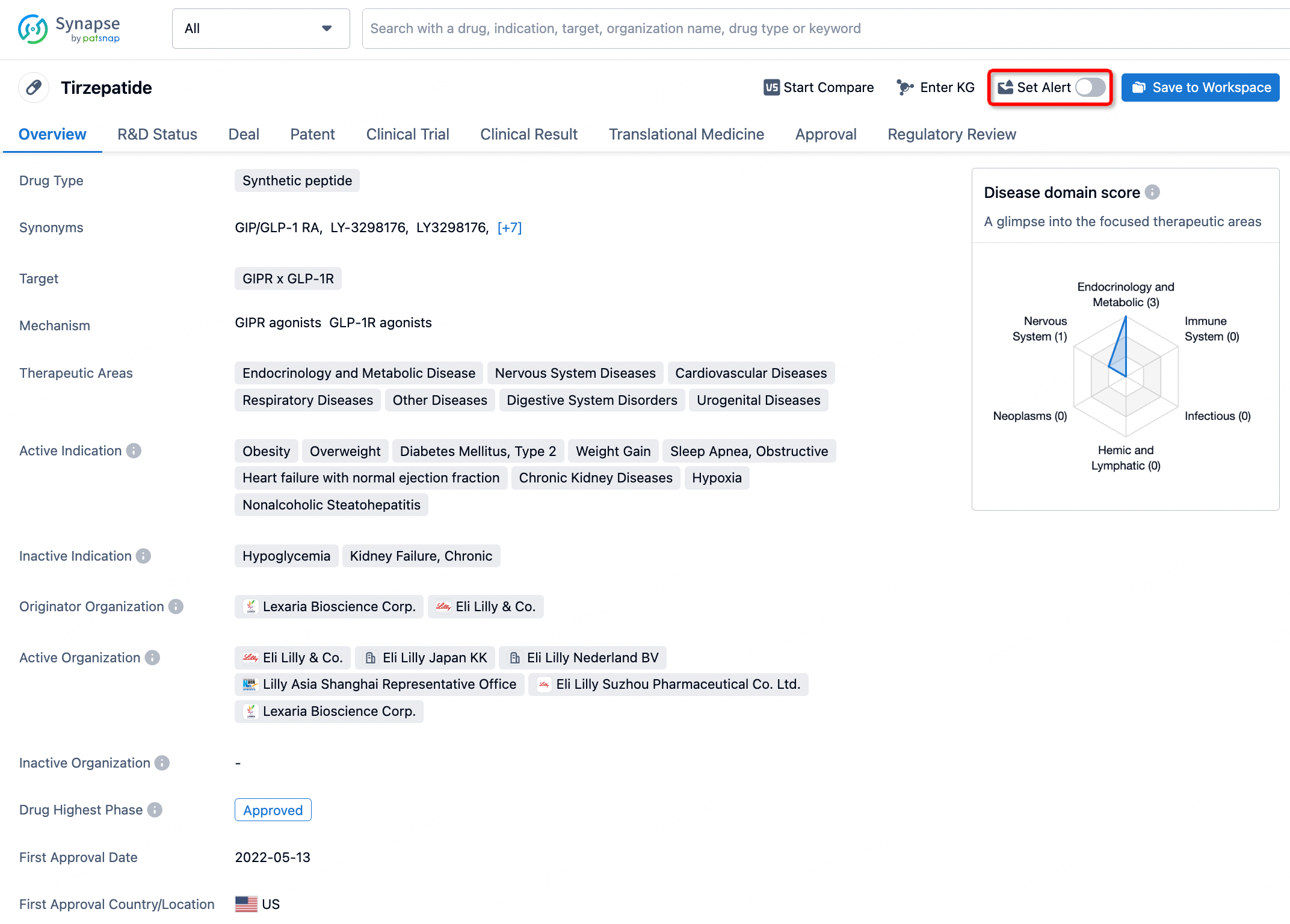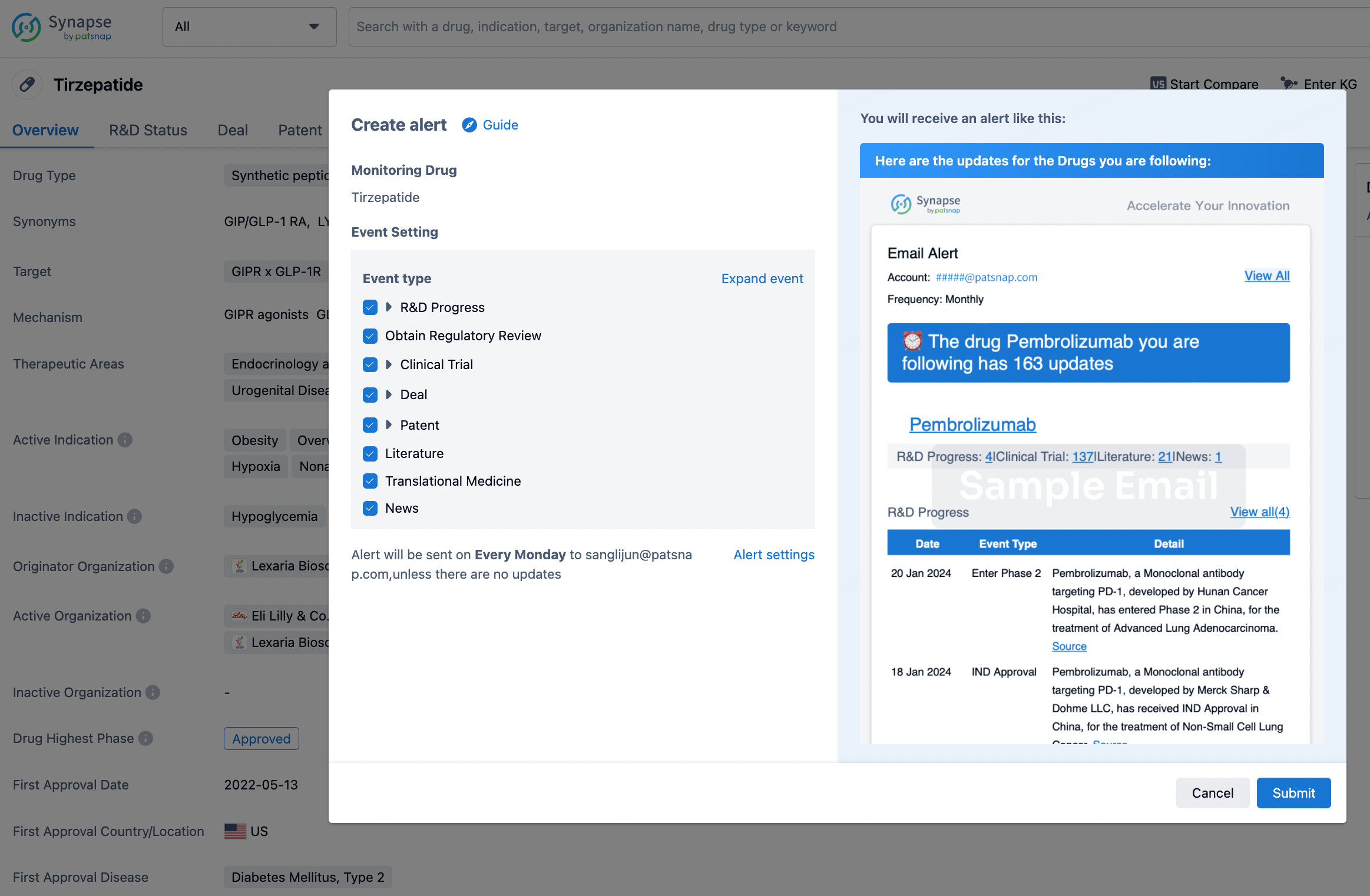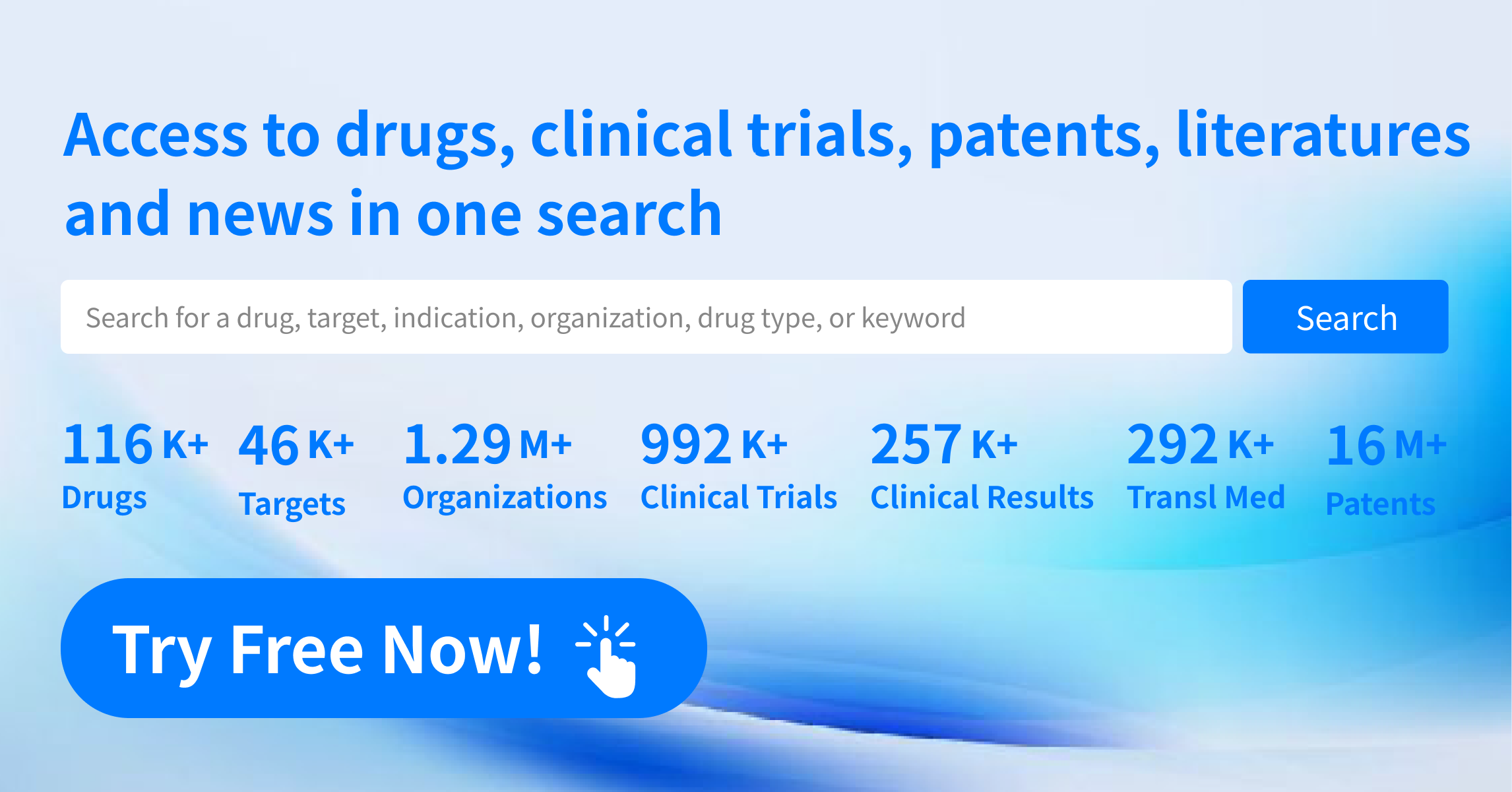Request Demo
What is Acetylcholine Chloride used for?
15 June 2024
Acetylcholine chloride is a fascinating and highly significant compound in the world of biochemistry and pharmacology. Known by various trade names, this drug targets the cholinergic system, making it indispensable in both research and clinical settings. Research institutions around the globe are continually studying its effects and potential applications. Acetylcholine chloride is primarily classified as a neurotransmitter and a parasympathomimetic drug. It is indicated for a variety of medical conditions and is often used in intraocular surgeries to induce miosis. From a research standpoint, its applications extend to understanding neurodegenerative diseases, muscle function, and various other physiological processes.
Acetylcholine chloride is an ester of choline and acetic acid and functions as a neurotransmitter in both the central and peripheral nervous systems. It plays a crucial role in the transmission of nerve impulses at cholinergic synapses and neuromuscular junctions. It is synthesized in the body from choline and acetyl-CoA by the enzyme choline acetyltransferase. Once released into the synaptic cleft, acetylcholine binds to receptors on the post-synaptic membrane, leading to various physiological responses, including muscle contraction, increased glandular secretions, and modulation of heart rate. The action of acetylcholine is terminated by the enzyme acetylcholinesterase, which hydrolyzes it into choline and acetic acid.
The administration of acetylcholine chloride can vary depending on its intended use. In surgical settings, particularly ophthalmic surgeries, it is administered via intraocular injection to induce rapid miosis (pupil constriction). This effect is almost immediate, typically occurring within seconds to a minute after administration. In research settings, acetylcholine chloride may be administered intravenously or through other routes, depending on the experimental design. The onset time when administered intravenously is also rapid, contributing to its efficacy in acute settings. The short half-life of acetylcholine chloride necessitates precise dosing and careful monitoring during its administration.
While acetylcholine chloride is generally well-tolerated when used appropriately, it does have a range of potential side effects. Common side effects include bradycardia (slowing of the heart rate), hypotension (low blood pressure), and increased salivation and sweating. In surgical settings, these side effects are usually transient and manageable. However, contraindications exist for individuals with conditions such as asthma, peptic ulcers, and hyperthyroidism, where the drug's cholinergic effects could exacerbate symptoms. Additionally, care must be taken in patients with cardiovascular disease, as the bradycardic effects could lead to complications. It is essential to screen patients thoroughly and monitor them closely during administration to mitigate these risks.
Acetylcholine chloride can interact with several other drugs, which can either potentiate or mitigate its effects. For instance, drugs that inhibit acetylcholinesterase, such as neostigmine or organophosphate insecticides, can enhance the effects of acetylcholine chloride, potentially leading to excessive cholinergic stimulation and toxicity. Conversely, drugs with anticholinergic properties, such as atropine, can antagonize the effects of acetylcholine chloride, rendering it less effective. Additionally, certain anesthetics and muscle relaxants can interact with acetylcholine chloride, influencing its efficacy and safety profile. It is crucial for healthcare providers to review all medications a patient is taking to avoid adverse interactions and ensure the optimal therapeutic outcome.
In conclusion, acetylcholine chloride is a vital compound in both clinical and research settings, with a broad range of applications. Its role as a neurotransmitter and its ability to induce rapid physiological changes make it indispensable for certain medical procedures and scientific studies. Understanding its mechanism of action, appropriate administration methods, potential side effects, and interactions with other drugs is essential for its safe and effective use. Ongoing research continues to uncover new insights into its functions and potential therapeutic applications, solidifying its importance in the field of medical science.
Acetylcholine chloride is an ester of choline and acetic acid and functions as a neurotransmitter in both the central and peripheral nervous systems. It plays a crucial role in the transmission of nerve impulses at cholinergic synapses and neuromuscular junctions. It is synthesized in the body from choline and acetyl-CoA by the enzyme choline acetyltransferase. Once released into the synaptic cleft, acetylcholine binds to receptors on the post-synaptic membrane, leading to various physiological responses, including muscle contraction, increased glandular secretions, and modulation of heart rate. The action of acetylcholine is terminated by the enzyme acetylcholinesterase, which hydrolyzes it into choline and acetic acid.
The administration of acetylcholine chloride can vary depending on its intended use. In surgical settings, particularly ophthalmic surgeries, it is administered via intraocular injection to induce rapid miosis (pupil constriction). This effect is almost immediate, typically occurring within seconds to a minute after administration. In research settings, acetylcholine chloride may be administered intravenously or through other routes, depending on the experimental design. The onset time when administered intravenously is also rapid, contributing to its efficacy in acute settings. The short half-life of acetylcholine chloride necessitates precise dosing and careful monitoring during its administration.
While acetylcholine chloride is generally well-tolerated when used appropriately, it does have a range of potential side effects. Common side effects include bradycardia (slowing of the heart rate), hypotension (low blood pressure), and increased salivation and sweating. In surgical settings, these side effects are usually transient and manageable. However, contraindications exist for individuals with conditions such as asthma, peptic ulcers, and hyperthyroidism, where the drug's cholinergic effects could exacerbate symptoms. Additionally, care must be taken in patients with cardiovascular disease, as the bradycardic effects could lead to complications. It is essential to screen patients thoroughly and monitor them closely during administration to mitigate these risks.
Acetylcholine chloride can interact with several other drugs, which can either potentiate or mitigate its effects. For instance, drugs that inhibit acetylcholinesterase, such as neostigmine or organophosphate insecticides, can enhance the effects of acetylcholine chloride, potentially leading to excessive cholinergic stimulation and toxicity. Conversely, drugs with anticholinergic properties, such as atropine, can antagonize the effects of acetylcholine chloride, rendering it less effective. Additionally, certain anesthetics and muscle relaxants can interact with acetylcholine chloride, influencing its efficacy and safety profile. It is crucial for healthcare providers to review all medications a patient is taking to avoid adverse interactions and ensure the optimal therapeutic outcome.
In conclusion, acetylcholine chloride is a vital compound in both clinical and research settings, with a broad range of applications. Its role as a neurotransmitter and its ability to induce rapid physiological changes make it indispensable for certain medical procedures and scientific studies. Understanding its mechanism of action, appropriate administration methods, potential side effects, and interactions with other drugs is essential for its safe and effective use. Ongoing research continues to uncover new insights into its functions and potential therapeutic applications, solidifying its importance in the field of medical science.
How to obtain the latest development progress of all drugs?
In the Synapse database, you can stay updated on the latest research and development advances of all drugs. This service is accessible anytime and anywhere, with updates available daily or weekly. Use the "Set Alert" function to stay informed. Click on the image below to embark on a brand new journey of drug discovery!
AI Agents Built for Biopharma Breakthroughs
Accelerate discovery. Empower decisions. Transform outcomes.
Get started for free today!
Accelerate Strategic R&D decision making with Synapse, PatSnap’s AI-powered Connected Innovation Intelligence Platform Built for Life Sciences Professionals.
Start your data trial now!
Synapse data is also accessible to external entities via APIs or data packages. Empower better decisions with the latest in pharmaceutical intelligence.


